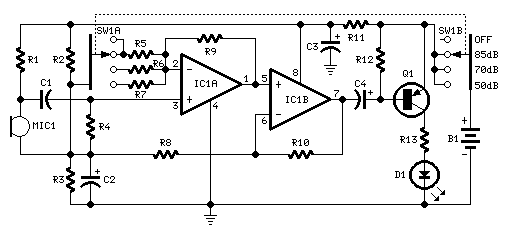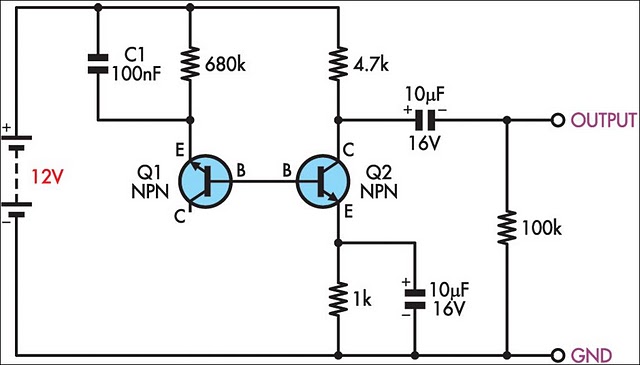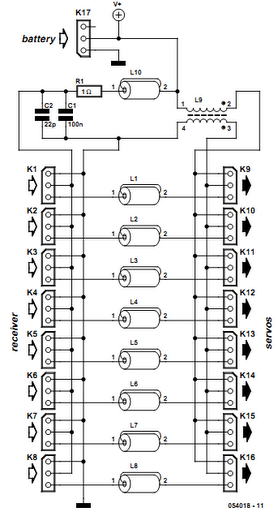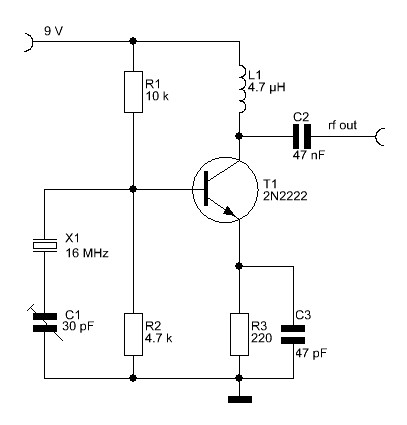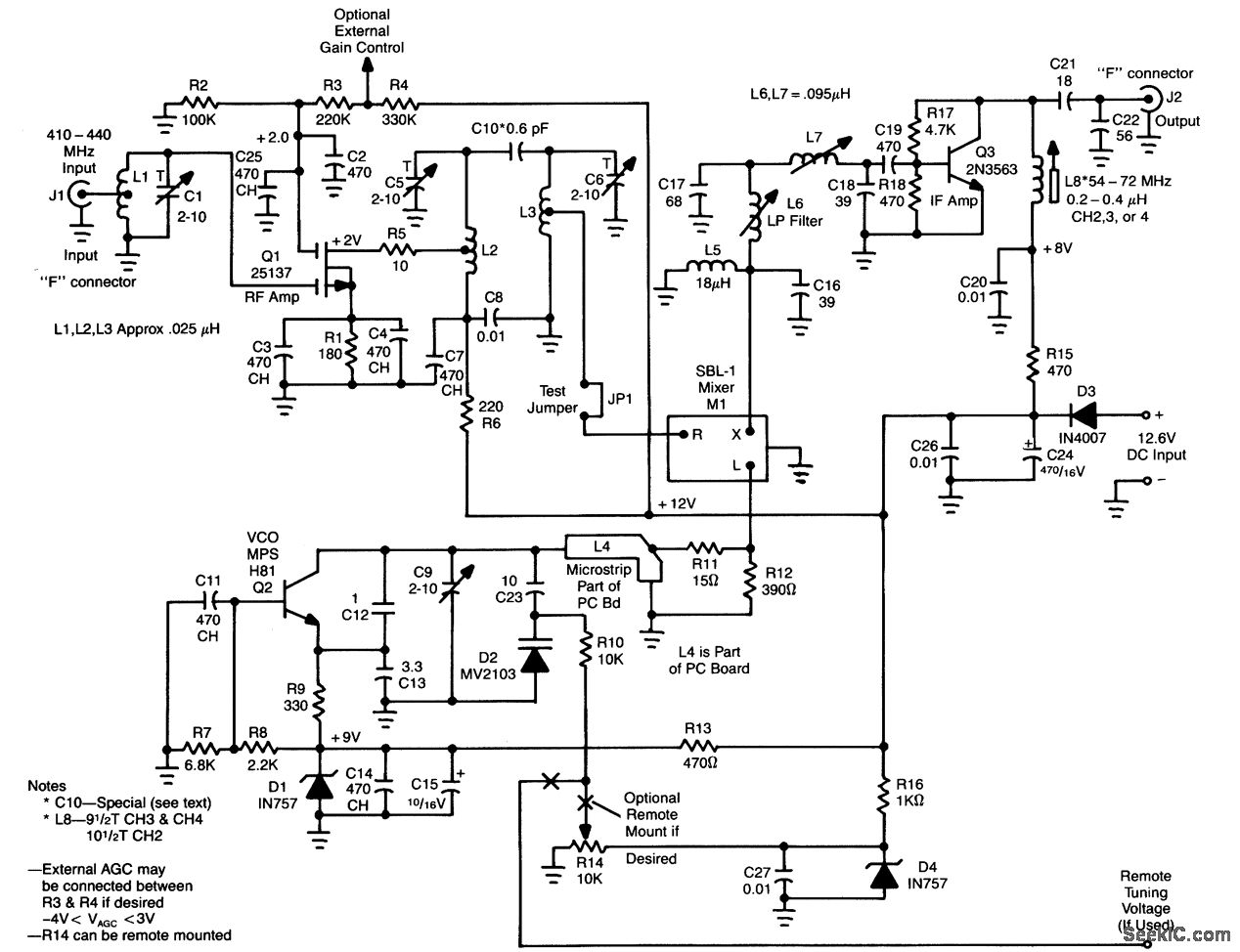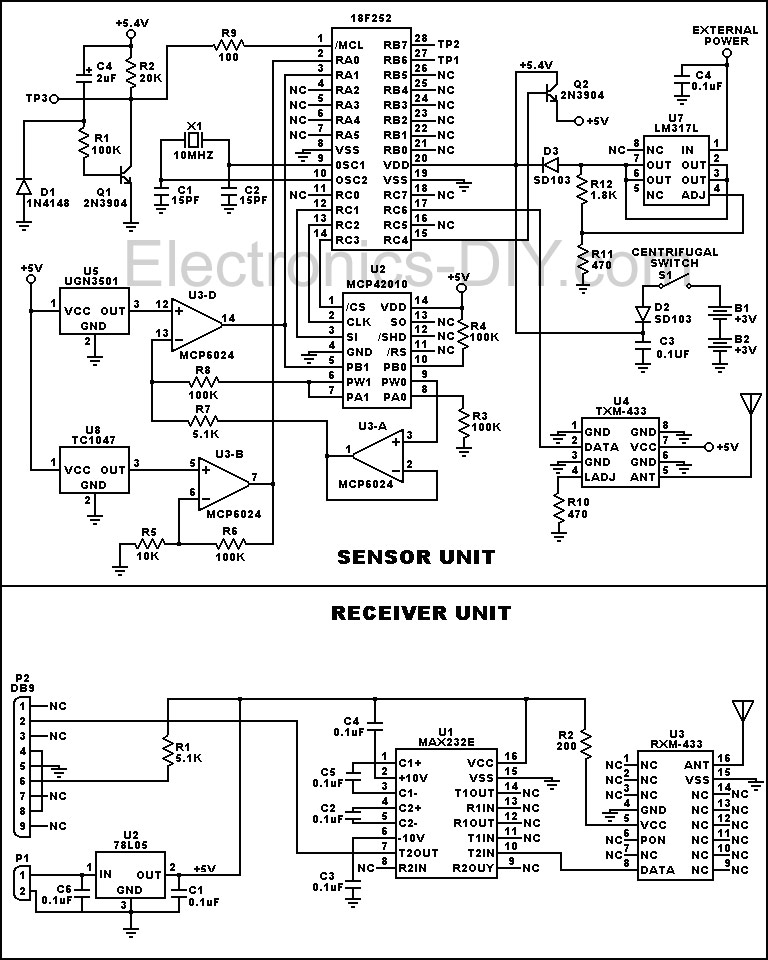
Environmental Noise Monitor
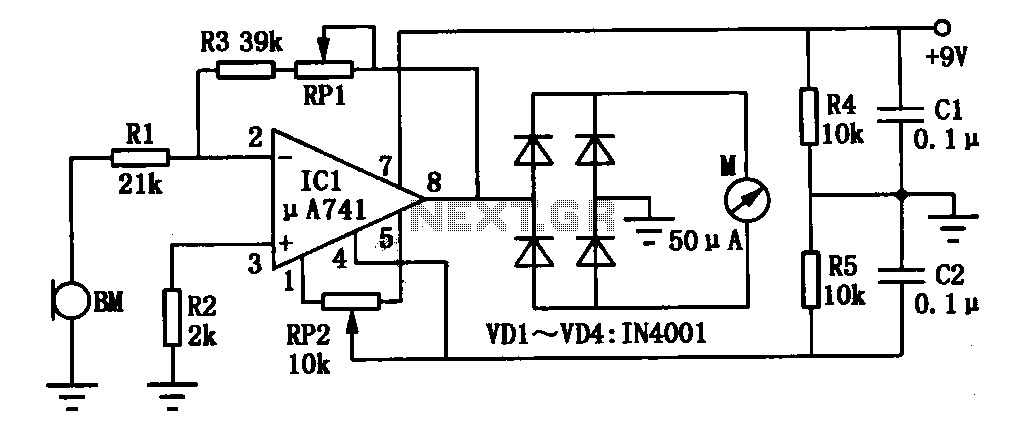
An environmental noise monitor circuit is presented. It primarily consists of a high-gain operational amplifier configured to amplify noise signals. The measured noise signal is displayed on an ammeter. The operational amplifier (IC1) receives the noise signal detected by the microphone (BM) at its inverting input. The signal is then processed through full-wave rectification using diodes (VD1 to VD4), with the final ammeter deflection indicating the intensity of the ambient noise. To calibrate the circuit, the short ends of the first microphone are adjusted, and the zero potentiometer (RP2) is used to set the ammeter to zero. Additionally, the sensitivity of the ammeter can be modified using the adjustment potentiometer (RP1), which corresponds to the noise meter scale values for standard calibration.
The environmental noise monitor circuit is designed to accurately measure ambient noise levels through a systematic approach involving several key components. The circuit utilizes a high-gain operational amplifier (IC1) to amplify the electrical signal generated by the microphone (BM) in response to environmental noise. This configuration allows for the detection of low-level noise signals that may otherwise be imperceptible.
The microphone converts sound waves into an electrical signal, which is fed into the inverting input of the operational amplifier. The gain of the amplifier is crucial for enhancing the signal-to-noise ratio, ensuring that the ambient noise is effectively captured and processed. Following the amplification stage, the signal undergoes full-wave rectification through a series of diodes (VD1 to VD4). This rectification process converts the alternating current (AC) signal into a direct current (DC) signal, allowing for a more straightforward measurement of the noise intensity.
The ammeter serves as the final output device, providing a visual representation of the noise level. The circuit includes two potentiometers for calibration and sensitivity adjustment. The zero potentiometer (RP2) is used to ensure that the ammeter reads zero in the absence of noise, facilitating accurate measurements. The sensitivity potentiometer (RP1) allows for fine-tuning of the ammeter response, enabling the user to calibrate the circuit according to specific noise level standards.
Overall, this environmental noise monitor circuit is a robust design that effectively captures and displays noise levels, making it suitable for a variety of applications, including environmental monitoring and sound level assessment in various settings. The combination of high-gain amplification, rectification, and adjustable calibration ensures reliable performance and accuracy in measuring ambient noise.Environmental noise monitor circuit is shown. It mainly consists of high gain mu Specification for Zinc composition. Measured noise signal is indicated by the ammeter. ICl oper ational amplifier connected as amplifier noise, the noise signal to be detected by the microphone BM applied to the inverting input of ICl, zoom in and then full-wave rectification by the diode VDl ~ VD4, last ammeter deflection, thereby indicating the intensity of the ambient noise. When adjusted, the short ends of the first microphone, adjust the zero potentiometer RP2, ammeter indicates 0.
Adjustment potentiometer RPl, can change the sensitivity of the ammeter. Corresponding to the intensity of the noise meter scale values available a standard to monitor calibration.
The environmental noise monitor circuit is designed to accurately measure ambient noise levels through a systematic approach involving several key components. The circuit utilizes a high-gain operational amplifier (IC1) to amplify the electrical signal generated by the microphone (BM) in response to environmental noise. This configuration allows for the detection of low-level noise signals that may otherwise be imperceptible.
The microphone converts sound waves into an electrical signal, which is fed into the inverting input of the operational amplifier. The gain of the amplifier is crucial for enhancing the signal-to-noise ratio, ensuring that the ambient noise is effectively captured and processed. Following the amplification stage, the signal undergoes full-wave rectification through a series of diodes (VD1 to VD4). This rectification process converts the alternating current (AC) signal into a direct current (DC) signal, allowing for a more straightforward measurement of the noise intensity.
The ammeter serves as the final output device, providing a visual representation of the noise level. The circuit includes two potentiometers for calibration and sensitivity adjustment. The zero potentiometer (RP2) is used to ensure that the ammeter reads zero in the absence of noise, facilitating accurate measurements. The sensitivity potentiometer (RP1) allows for fine-tuning of the ammeter response, enabling the user to calibrate the circuit according to specific noise level standards.
Overall, this environmental noise monitor circuit is a robust design that effectively captures and displays noise levels, making it suitable for a variety of applications, including environmental monitoring and sound level assessment in various settings. The combination of high-gain amplification, rectification, and adjustable calibration ensures reliable performance and accuracy in measuring ambient noise.Environmental noise monitor circuit is shown. It mainly consists of high gain mu Specification for Zinc composition. Measured noise signal is indicated by the ammeter. ICl oper ational amplifier connected as amplifier noise, the noise signal to be detected by the microphone BM applied to the inverting input of ICl, zoom in and then full-wave rectification by the diode VDl ~ VD4, last ammeter deflection, thereby indicating the intensity of the ambient noise. When adjusted, the short ends of the first microphone, adjust the zero potentiometer RP2, ammeter indicates 0.
Adjustment potentiometer RPl, can change the sensitivity of the ammeter. Corresponding to the intensity of the noise meter scale values available a standard to monitor calibration.
